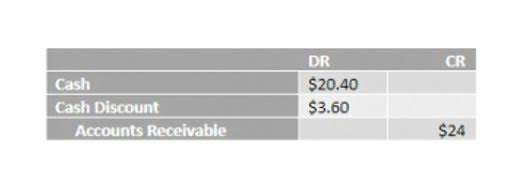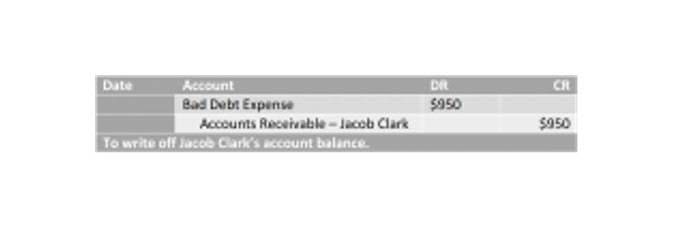
The regulations do not address the conduct of, or requirements related to, financial planners. Section 1.401(a)(9)-4(e)(7) requires a beneficiary to provide documentation to a plan administrator showing that the beneficiary was disabled or chronically ill as of the date of the employee’s death. Typically, this requirement will be satisfied by having a licensed health care practitioner certify that the beneficiary was disabled or chronically ill in a statement that is provided to the plan administrator. The rollover rules of section 402(c) also apply to a distribution from a section 403(a) qualified annuity plan, a section 403(b) plan, and an eligible deferred compensation plan described in section 457(b) maintained by an eligible employer described in section 457(e)(1)(A). See sections 403(a)(4)(B), 403(b)(8)(B), and 457(e)(16)(B), respectively.
§54.4974-1 Excise tax on accumulations in qualified retirement plans.
In that case, allowing the deemed distribution that results from the use of the IRA to secure a loan or to purchase a collectible to be used to satisfy the requirement to take a minimum distribution would reduce the deterrent effect of the statutorily specified tax consequence of those actions. To coordinate with the rules in §1.402(c)-2(j), the proposed regulations added a deadline for the election under which a surviving spouse may elect to treat a decedent’s IRA as the spouse’s own. Specifically, a surviving spouse must make that election by the later of (1) the end of the calendar year in which the surviving spouse reaches age 72, and (2) the end of the calendar year following the calendar year of the IRA owner’s death. Under the proposed regulations, if the surviving spouse were to miss that deadline, the surviving spouse still would be permitted to roll over distributions to the spouse’s own IRA but would be subject to the special rule on the catch-up of hypothetical required minimum distributions described in section II of this Summary of Comments and Explanation of Revisions. In addition, these regulations provide rules that apply if the annuity contract purchased under a defined benefit plan is merely providing the same benefits that would have been payable under the defined benefit plan if an annuity contract had not been purchased.16 In that case, the annuity contract is permitted to have the same increases in annuity payments as under the qualified defined benefit rules. This could occur, for example, if an annuity contract is purchased under a terminating defined benefit plan.
- Service Revenue increases (credit) for $1,500 because service revenue was earned but had been previously unrecorded.
- If B exercises the withdrawal power, the trustee must withdraw from A’s account under Plan X the greater of the amount of income earned in the account during the calendar year or the required minimum distribution.
- Section 1248(c)(2)(B) describes a 10-percent ownership threshold, taking into account the constructive ownership rules in section 958(b).
- This can make a business more appealing to investors who are seeking long-term value and a return on their investment.
- (B) Any beneficiary of an accumulation trust that could receive amounts in the trust representing the employee’s interest in the plan that were not distributed to beneficiaries described in paragraph (f)(3)(i)(A) of this section.
- In addition, these final regulations provide that if the minimum distribution was required to be paid from a particular qualified retirement plan or eligible deferred compensation plan, then the corrective distribution must be made from that particular qualified retirement plan or eligible deferred compensation plan.
Retained Earnings Calculator

In other words, investors will not see the liability account entries in the dividend payable account. Retained earnings are a type of equity and are therefore reported in the shareholders’ equity section of the balance sheet. Although retained earnings are not themselves an asset, they can be used to purchase assets such as inventory, equipment, or other investments. Therefore, a company with a large retained earnings balance may be well-positioned to purchase new assets in the future or offer increased dividend payments to its shareholders. By subtracting the cash and stock dividends from the net income, the formula calculates the profits a company has retained at the end of the period. If the result is positive, it means the company has added to its retained earnings balance, while a negative result indicates a reduction in retained earnings.
Changes in Accounting Policy

It can reinvest this money into the business for expansion, operating expenses, research and development, acquisitions, launching new products, and more. The specific use of retained earnings depends on the company’s financial goals. Ultimately, the company’s management and board of directors decides how to use retained earnings. Retained earnings, on the other hand, specifically refer to the portion of a company’s profits that remain within the business instead of being distributed to shareholders as dividends. Yes, having high retained earnings is considered a positive sign for a company’s financial performance.
A’s account balance in Plan X is invested only in productive assets and was includible in A’s gross estate under section 2039. A named a testamentary trust (Trust P) as the beneficiary of all amounts payable from A’s account in Plan X after A’s death. Trust P satisfies the see-through trust requirements of paragraph (f)(2) of this section. (ii) Power of appointment—(A) the accumulated net amount of revenue less expenses and dividends is reflected in the balance of Exercise or release of power of appointment by September 30. A trust does not fail to satisfy the identifiability requirements of this paragraph (f)(5) merely because an individual (powerholder) has the power to appoint a portion of the employee’s interest to one or more beneficiaries that are not identifiable within the meaning of paragraph (f)(5)(i) of this section.

Retained Earnings on the Balance Sheet

IRAs that a person holds as a beneficiary of a decedent are aggregated for purposes of paragraph (e)(1) of this section, but those amounts are not aggregated with IRAs that the person holds as the owner or as the beneficiary of a different decedent. A section 403(b) contract that is part of a governmental plan (within the meaning of section 414(d)) is treated as having complied with section 401(a)(9) for all years to which section 401(a)(9) applies to the contract, if the terms of the contract reflect a reasonable, good faith interpretation of section 401(a)(9). (B) Occurs within the period beginning on the date of the employee’s severance from employment and ending on the first anniversary of that date.
- Assuming that Clay Corporation’s income tax rate is 30%, the tax effect of the $1,000 is a $300 (30% × $1,000) reduction in income taxes.
- Accordingly, if an employee dies after the required beginning date, distributions to the employee’s beneficiary for calendar years after the calendar year in which the employee died must satisfy section 401(a)(9)(B)(i) as well as section 401(a)(9)(B)(ii).
- Except as otherwise provided in this section (for example, permitted increases described in paragraph (o) of this section), all payments (whether paid over an employee’s life, joint lives, or a period certain) also must be nonincreasing.
- If the employee does not have a designated beneficiary as of the date determined under §1.401(a)(9)-4(c), the applicable denominator is the employee’s remaining life expectancy.
Video Explanation of Retained Earnings
- (iv) Certain triangular reorganizations described in §1.367(b)-10.
- Several commenters requested that the final regulations eliminate the special rule for distributions to surviving spouses.
- Retained earnings represent the accumulated profits a company has kept over time after paying dividends to shareholders.
- Because a stream of annuity payments in the form of a straight life annuity satisfies section 401(a)(9), and each of the conditions under paragraph (n)(3) of this section are satisfied, the modification of annuity payments to E meets the requirements of this paragraph (n).
- (c) Distributions in the case of a defined contribution plan—(1) In general.
- In addition, because the modified payment period does not include a period certain, paragraph (n)(3)(iv) of this section does not apply.
